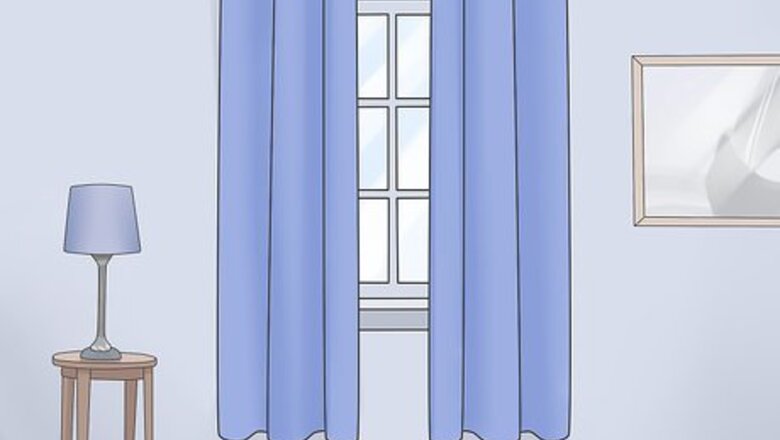
views
Using Current Decor for Inspiration
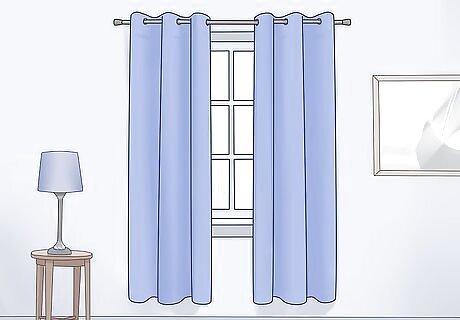
Take the existing color scheme and decor into consideration. Unless you’re starting with a blank canvas, chances are the room you’re working in already has paint, furniture, and decorations. Consider the color palette of the walls, furniture, and accent pieces. Plan on picking curtains that accentuate the rest of the room. For example, if the room is filled with expressive artwork and heavy wood furniture, heavier drapes would look more at home than sheer curtains would.
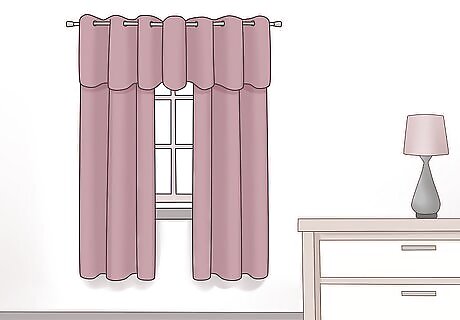
Stick with the same color scheme to make a room feel more unified. You don’t need to match colors exactly but stay in the same family of a particular shade to create a cohesive room that looks impeccable. If you’re struggling with color inspiration, visit a home improvement store and check out the paint sample swatches—they will show you a range of different colors that complement each other. For example, dark burgundy curtains would look very elegant in a room with light purple paint, wood furniture, and accent shades of purple.

Create a pop of color by matching the curtains to an accent shade. Look around your room and see what common colors are present in your decor and textiles, like pillows and blankets. Choose curtains that are that same color to tie the room together. For example, if the room is primarily gray and tan with accents of yellow throughout, yellow curtains or curtains with a yellow pattern could work well. Just make sure the colors aren't too bright or loud if they don't work with the rest of your interior design.
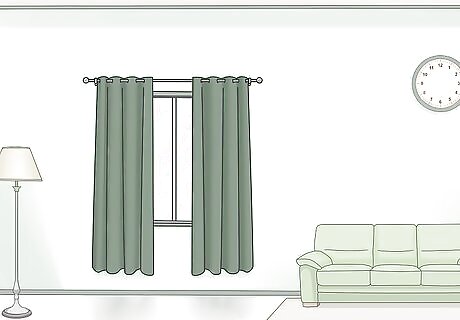
Pick curtains that are darker than the walls for a classic look. For example, if your walls are a light shade of blue, navy blue curtains would be a nice choice. This creates contrast so that the curtains don’t just blend in with the walls; instead, they’ll stand out and look neat and tailored. Don’t forget that you could also layer curtains. For example, using sheer white curtains behind navy blue ones could create a bright, fresh-looking layer, especially when just the navy blue curtains are pulled back.
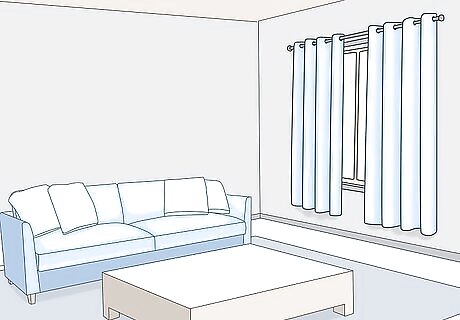
Base the curtain color off of your furniture if your walls are a neutral color. Neutral walls give you a lot of space to use different colors in textiles, decorations, and curtains. If your furniture is also neutrally colored, choosing similar curtains will create a calm atmosphere. Consider sticking to the same color scheme as the furniture, or pick a brighter color or pattern to add some visual interest to the space. For example, dark gray curtains would look striking against white or beige walls in a room with light gray furniture.

Foster an eclectic vibe with curtains that clash with the rest of the room. Contrasting colors can be visually stunning when done right. Be thoughtful about the interplay so that the room doesn’t feel crowded or visually overwhelming. For example, if you have a lot of stripes in a room, adding striped curtains may be a little disorienting. But if you use curtains with a floral pattern, the contrast between the strips and flowers could be cool.
Creating a New Look with Colors and Patterns
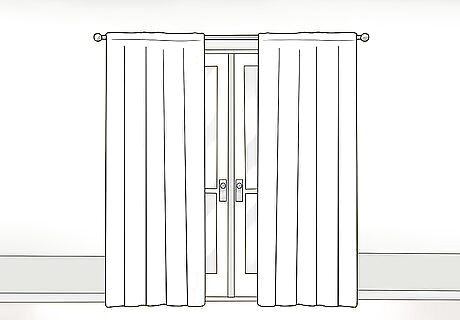
Create an inviting, sunlit space with white curtains. If you want a room to feel fresh and invigorating, you can’t go wrong with white. It’s a peaceful color that instantly makes a room feel crisp and clean. Plus, they can make a small room appear larger than it is. Sheer curtains allow more natural light to enter a room. White curtains of a thicker material still elevate the space, but they look a little more formal and need to be cleaned more often because dust and dirt are more visible on them.
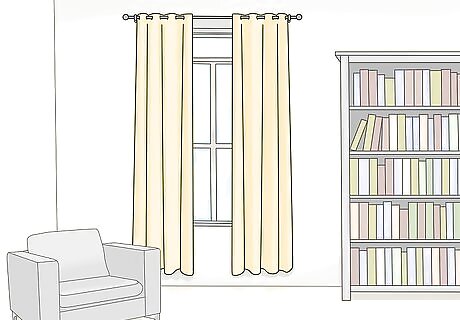
Use bright curtains to energize a room. If you prefer a splash of color, curtains are a great way to instantly give a room a facelift. Use solid colored curtains or patterned ones, just depending on the decor already in the space. Color can impact your mood, so consider the following when making your decision: Red is a warm and passionate color that is great for spaces where people gather together, like kitchens and living rooms. Orange often energizes people, so it’s best for offices, living rooms, or common gathering spaces. Avoid using it in bedrooms as it could be overstimulating. Yellow can be cheerful and warm. It plays well in kitchens and offices, but too much of it could be overstimulating so avoid using it in rooms where you want things to be calm.Tip: Avoid putting brightly colored curtains in rooms that receive a lot of sunlight. The sun will fade the color over time, making the curtains look dull and uneven. If you do want to go for a bright color in a sunny room, pick curtains made of faux silk, brocade, cotton canvas, or chintzes.
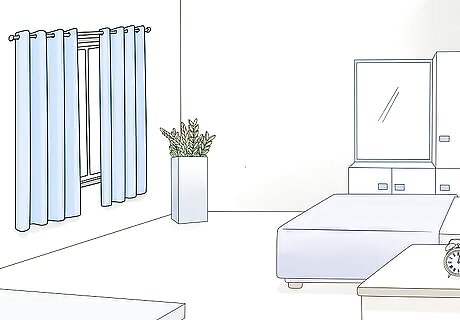
Opt for cool, calm colors in rooms where you want to feel relaxed. Cooler shades are great for bedrooms, offices, bathrooms, and some living spaces. Try to use them in rooms that get some natural sunlight, otherwise, they can sometimes make a room feel smaller or claustrophobic. Green is a great color that calms people down, as it is reminiscent of nature. Bedrooms, offices, living rooms, and dining rooms are great places to use green curtains. Blue is a calm, serene color. It’s great for bedrooms and bathrooms. Purple is generally a deeper and more elegant shade that invites people to sit and relax. It’s great for living rooms and dining rooms. Lighter purples can be very calming and good picks for bedrooms.
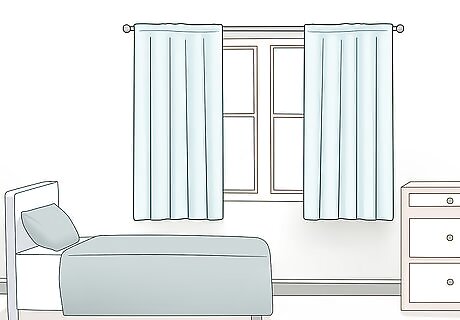
Opt for pastel curtains for a gentle pop of color that won’t overstimulate. Consider adding them to your bedroom for a soothing effect. You could match a color that is already present, like putting up light pink pastel curtains in a room that has lots of red in it, or you could go off-book and do something like light green pastel curtains in a room that is predominantly blue. Pastels also look great in rooms that are already fairly neutral in color. They support the calm atmosphere while still creating a slight visual impact.
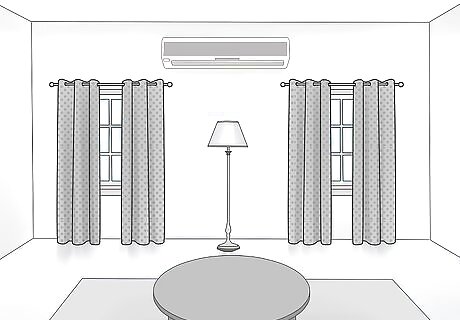
Create an elegant interior with monochrome curtains. Monochrome curtains work best in a room that is already fairly monochrome—meaning that there is a single focal color. Choose monochrome curtains if you want a unified and soothing space. Don’t worry about matching the curtains exactly to the color of the walls. As long as they are close, the effect should be the same. Look up photos of monochromatic rooms for inspiration—you’ll see that whites, grays, and yellows are the more commonly used colors, but some striking spaces utilize blues, yellows, and other brighter colors.

Experiment with contrasting colors for high visual impact. Look at the colors in the room and go to the opposite end of the color spectrum. For example, if the room has a lot of white furniture and decor, think about installing black curtains. If you like a more colorful space, consider using yellow curtains in a predominantly purple space or mixing pink and blue. As long as you like the result, you can choose whatever combination you like best. Remember that you can always switch out your curtains if you get tired of the feel of a room.
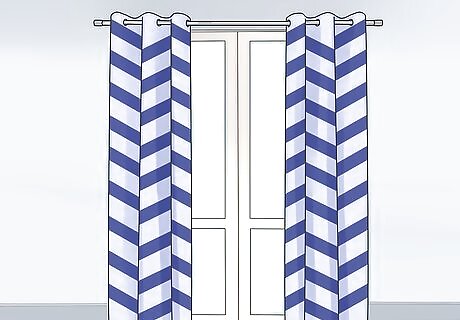
Liven up a room with patterned curtains. If the space you’re decorating is more subtle in color scheme, patterned curtains are a great way to add color, texture, and visual appeal. You could choose curtains that complement the existing color scheme, or pick a pattern with contrasting colors to create a more eclectic and energized space. This can be a nice way to transform a room if you aren’t able to paint the walls.
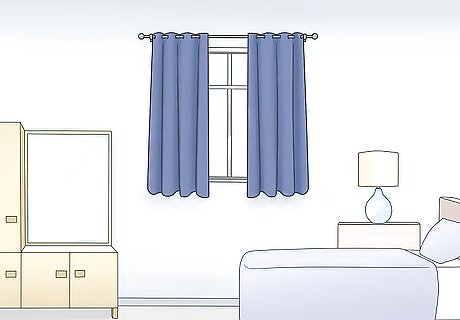
Calm down busy decor with subtle, solid curtains. If you’re working in a space that is full of colorful artwork, furniture, or textiles, keep the emphasis on those items by hanging neutral-colored curtains. Grays, browns, tans, and whites are nice options that will provide some cover while not drawing attention away from the rest of your decor. Too many patterns or bold, bright colors in a room could overwhelm your senses.
Choosing a Type of Fabric
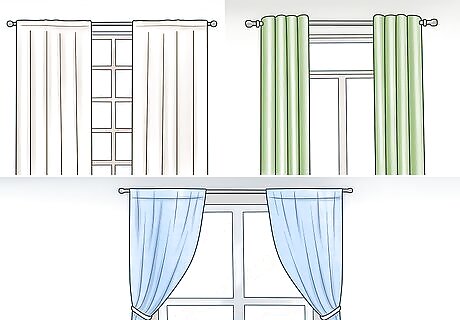
Create a more formal look with linen, silk, or velvet. Curtains made of these types of materials tend to hang nicely and look very elegant. Use them in dining rooms, formal living rooms, or even a bedroom if the rest of the decor is upscale. If you do use these materials for your curtains, try to not let anything press up against them, like furniture. They tend to be more delicate and get wrinkled or misshapen easily.
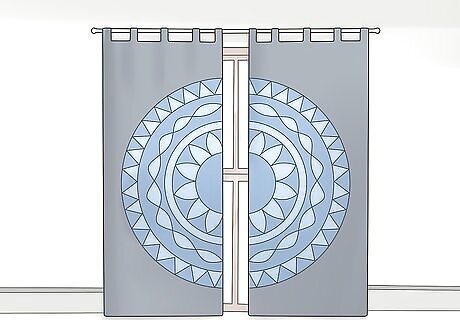
Use suede, velvet, tapestry, or tweed to insulate a room against the cold. For large, drafty rooms, curtains can do a lot to keep heat in. The thicker the curtain, the better insulated a room will be. These curtains tend to look thicker and heavier, so consider if that matches the aesthetic you’re going for.Tip: There’s no need to use the same curtains year-round! Feel free to switch out your curtains as the seasons change. During warmer months, utilize lighter curtains that let in the sun. When the cooler months come around, switch them out for heavier ones that will help keep the cold air out and the warm air in.

Choose blackout curtains to keep sunlight and noise to a minimum. Nurseries and bedrooms should be calm spaces that promote good sleep, and sometimes light and noise can interfere with that. Opt for heavy blackout curtains if you want to insulate a space against outside forces. Try your hand at making your own if you're handy with a sewing machine. Blackout curtains can be expensive and making your own can often cut down on the cost.
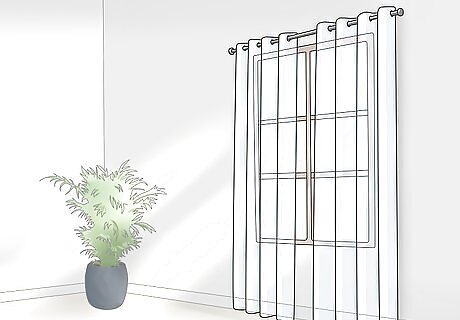
Let in lots of sunlight with sheer curtains. Bedrooms, bathrooms, living rooms, offices, and kitchens are spaces you might want to let in some extra natural light. Choose a color that complements the rest of your decor, or opt for white for a bright, clean look. Keep in mind that you could always install sheer curtains behind thicker ones, giving you the option of maintaining your privacy when you want to and letting in extra light when the mood strikes.


















Comments
0 comment